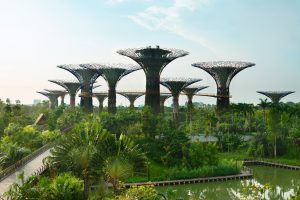In November, a group of ASEAN sectoral bodies known as the ASEAN Taxonomy Board (ATB) released its first version of the ASEAN Taxonomy for Sustainable Finance, an initial proposal for a sustainability classification system intended to apply across the world’s fifth largest economy. At a time when the concept of sustainability is rapidly evolving and ASEAN member states are developing their own national sustainability agendas, the ASEAN Taxonomy will help governments and investors identify sustainable economic activities in the Southeast Asian context and direct investments to fill a significant regional green financing gap.
But while the initial proposal adopts international best practices on environmental topics like climate change, it lacks a critical requirement found in other leading sustainability taxonomies: respect for human rights.
Public and private sector stakeholders alike view classification systems like the ASEAN Taxonomy as foundational tools to fulfill long-term sustainability agendas. These systems set out the criteria for determining whether an activity supports a range of sustainability goals, from combatting pollution and deforestation to upholding international labor standards. Clear metrics and thresholds, like a maximum amount of greenhouse gas emissions per unit of production, are often used to quantify the point at which an activity can be considered sustainable. Globally, more than 25 jurisdictions and numerous nongovernmental organizations are developing, or have already finalized, sustainability taxonomies.
For governments and regulatory bodies, taxonomies can help identify targets for future policy initiatives, like subsidies for clean energy projects or taxes on carbon-emitting activities. In the private sector, taxonomies can inform corporate sustainable business strategies and help investors direct capital toward sustainable projects. The potential to facilitate sustainable investment is particularly relevant in ASEAN where, according to the Monetary Authority of Singapore, an estimated $200 billion in green investments will be needed annually through to 2030.
The ASEAN Taxonomy is intended to bring these benefits to Southeast Asia in a framework that is generally aligned with the world’s most developed and influential sustainability taxonomy, the European Union’s Taxonomy Regulation. Under the ASEAN framework, an economic activity is sustainable if it contributes to at least one of four environmental objectives drawn from the EU Taxonomy: climate change mitigation, climate change adaptation, the protection of a healthy ecosystem and biodiversity, and the promotion of resource resilience and the transition to a circular economy.
In addition, sustainable economic activities must not significantly harm these environmental objectives and parties must minimize any adverse impacts. As a “minimum safeguard,” a sustainable economic activity may not breach local environmental laws established by ASEAN member states.
It is in the concept of minimum safeguards that the ASEAN Taxonomy diverges significantly from the EU Taxonomy. Where the ASEAN Taxonomy would only require compliance with local environmental laws, the EU Taxonomy instead recognizes “the relevance of international minimum human and labor rights and standards” in the environmental context and concludes that social safeguards “should be a condition for economic activities to qualify as environmentally sustainable.” Accordingly, Article 18 of the EU Taxonomy requires all sustainable economic activities to align with international human rights standards including the United Nations’ Guiding Principles on Business and Human Rights and the International Bill of Human Rights.
The absence of human rights protections is particularly marked in Southeast Asia, where forced labor risks are greater than in many other regions of the world. ASEAN member states including Myanmar, Cambodia, the Philippines, and Laos rank comparatively high in terms of vulnerability to modern slavery, including forced labor, according to the Global Slavery Index 2018. These risks may be heightened in the manufacturing and agriculture sectors, which are among the six identified by the ATB for priority attention as the ASEAN Taxonomy develops. Without minimum social safeguards requiring a respect for human rights and labor standards, the ASEAN Taxonomy risks not only prioritizing environmental criteria over human wellbeing but misalignment with other leading systems, like the EU Taxonomy, that could discourage international investment.
While the ATB could incorporate human rights protections in future iterations of the ASEAN Taxonomy, there are early indications that ASEAN member states will address the topic in their own national sustainability taxonomies, which will sit alongside the ASEAN Taxonomy. Last year, Singapore proposed a national green finance taxonomy that would require sustainable economic activities to exert “no negative impact on communities’ social and economic well-being.” That proposal explicitly refers to the U.N. Guiding Principles on Business and Human Rights and other international human rights standards.
In Malaysia, a climate change taxonomy finalized in May “strongly encourages” financial institutions to assess, as part of their lending or investment activities, whether businesses comply with Malaysian human rights and labor laws and the U.N. Guiding Principles. If the ATB ultimately leaves human rights out of the ASEAN Taxonomy for ASEAN member states to address individually, these national systems could, when read together with the ASEAN Taxonomy, form a more complete sustainable finance classification system that addresses the full spectrum of sustainability challenges in Southeast Asia.

































